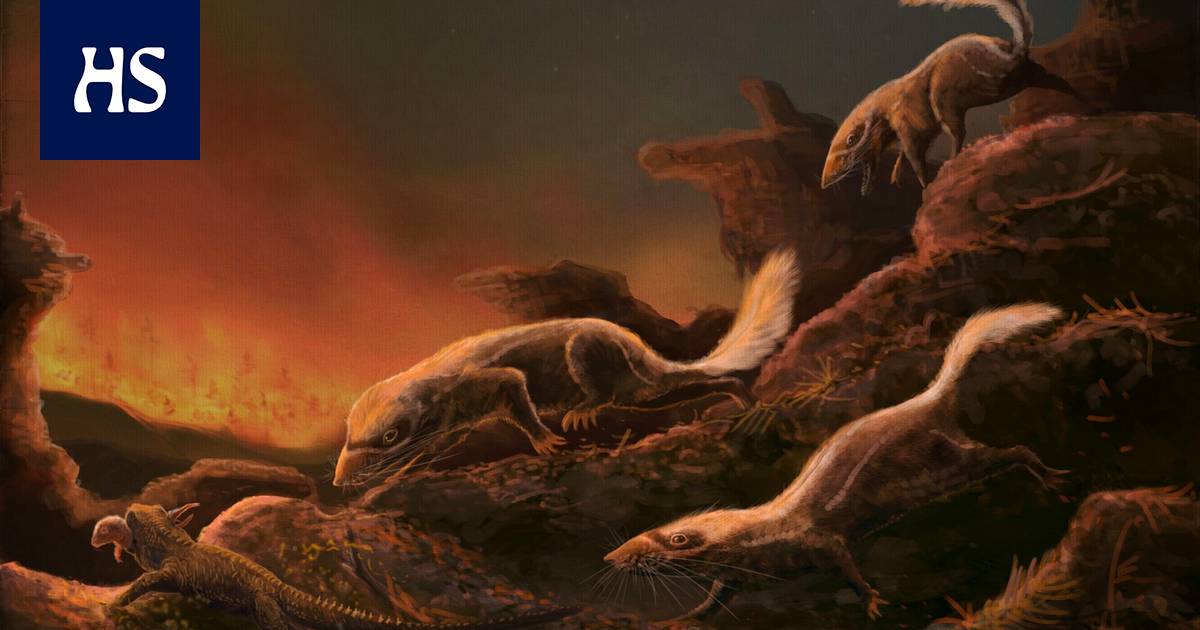Terrestrial about 6,500 species of mammals, from platypuses to large whales, descend from a single animal.
It lived around 180–250 million years ago, i.e. during the time of the dinosaurs.
The representative of the earliest mammals was small and cephalic, or mouse-like. It lived at night. One found has received of the name Morganucodo.
Morganucodo that is, about 205 million years ago.
Based on the molars, it has been concluded that the mother Morganucodo laid eggs, but also nursed her young. In the old days, mammals were also called lactating.
The Morganucodo fossil was discovered in 1949 in Welsh limestones in the British Isles.
It is apparently a sister group of the evolutionary tree leading to mammals.
Similar fossils have also been found in China and various parts of Europe and North America.
Morganucodo branched off from our parent species early in evolution, and is therefore not directly ancestral to us. The relationship resembles the chimpanzee’s relationship with the Homo genus.
The first ones the inheritance of mammals has now been clarified by studying the current species.
A group of geneticists deduced the number of chromosomes using the genes of different species living today.
Based on the evolutionary tree, the researchers assume that it inherited 38 chromosomes.
The genomes of 32 different animal species were examined. They represented different branches of the mammalian evolutionary tree.
Firstly, all three types of mammals were included in the review.
Horned whales, bats and anthills were included among the sessile whales. Marsupials were examined, for example, marsupials and wombats. The comparison also included a quite extraordinary mammal, the egg-laying platypus.
The genealogy of chickens and Chinese alligators was also studied. Researchers used them as external groups in the family tree when comparing mammals.
Researchers modeled the speciation of chromosomal genes at 16 branch points.
Scientists call them nodes. They stretched back in time, all the way to the common ancestor of all mammals.
At the branching point of the evolutionary tree, two separate lines form from the base line. It is the point where the evolutionary tree, or phylogenetic tree, splits into separate branches.
By studying these, geneticists concluded that at the beginning of the evolutionary tree, the common ancestor of mammals had 38 chromosomes. Humans have 46, or 23 pairs.
A mammal the nine smallest chromosomes are the same as the common ancestor of birds and reptiles.
By studying them in the evolutionary tree, you can reach even earlier ancestors.
“This study shows how genes and chromosomes have maintained a certain order over a period of more than 320 million years,” says the evolutionary biologist Harris Lewin.
According to Lewin, the order is amazingly stable. Lewin was one of the chromosome tracers of our distant ancestor.
The parts of the chromosomes where the genes were rearranged are called breakpoints.
At breakpoints, genes may break down, combine, repeat or move to different places in the gene band over time. Therefore, they play an important role in evolution, when new species arise from other species.
Major a tipping point was observed when platypus and marsupials diverged from platypus in the course of evolution.
“The results of the work increase the understanding of the development of mammals and can influence their conservation,” says Lewin.
The study was published by the American Academy of Sciences publication PNAS. The website also reported on it Science Alert.
#Paleontology #mammalian #stem #shape #modeled #inherited #small #mouselike #apparently #laid #eggs








